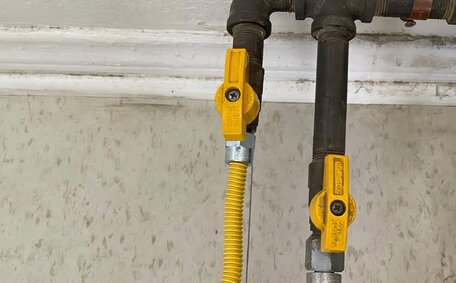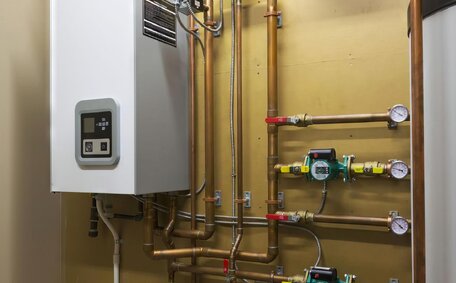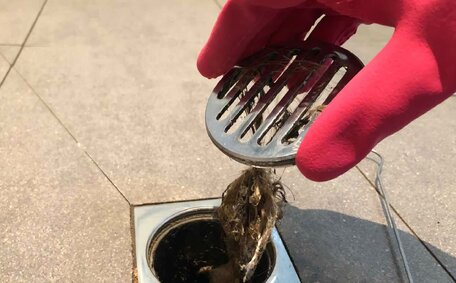Not asking the right questions when evaluating pipe relining companies
When researching potential relining companies, many homeowners fail to discern the calibre of the relining company with the right questions upfront. This oversight can result in selecting an unsuitable provider, leading to future complications. Ensure you ask the following critical questions:
- How long have they been in business? Look for an established company with at least 5-10 years of experience.
- What relining technology and materials do they use? Make sure they use high-quality epoxy resins and CIPP technology.
- Are they licenced, insured and accredited? Verify they carry all required credentials.
- What warranty do they offer? Good companies will guarantee their liner for at least 10 years.
- Can they provide customer references? Seeking feedback from past customers regarding their work is advisable.
- Will they provide a detailed pipe relining quote? It’s wise to compare quotes from multiple vendors when choosing your relining solution.
Our team of skilled professionals will gladly answer these questions, ensuring clarity and peace of mind. Transparency is key - choose right, ensuring you select a trustworthy pipe relining service and be wary of any company that seems evasive or vague. Understanding a company’s relining process and experience ensures you make an efficient choice.
Failing to understand the pipe relining process and technology
Many homeowners do not fully grasp how pipe relining works or the different relining technologies available. This lack of understanding can lead to choosing an inadequate solution or lower-quality materials. Here is a breakdown of the key things to know:
The Pipe Relining Process
Pipe relining is a trenchless method that renews pipes from the inside-out without the need for expensive and messy excavation. The fundamental steps for repairing damaged pipes, often overlooked, include:
- Inspecting the pipeline with a camera to assess damage
- Cleaning and preparing the pipe interiors
- Inserting an epoxy resin-laden felt tube into the pipe, a method known as Inversion
- Solidifying the liner with hot water under pressure, ensuring it bonds to the pipe interior
- Reinstating lateral connections once cured
Pipe Relining Technologies
The leading options are:
- CIPP (Cured-In-Place Pipe): The liner is inverted then cured with hot water for PVC, concrete and clay pipes. This method is designed to last over 50 years.
- Brawoliner: An advanced CIPP system made with patented Blue-Tek® materials that cure using ambient temperatures. This system is perfect for environmentally delicate areas.
- Patch Lining: Utilised for mending specific small, damaged segments instead of restoring entire pipelines.
When choosing a contractor, check they use certified relining materials marked with the WaterMark symbol to ensure quality. Comprehending the technology aids in choosing the correct solution for your sewer system and resolving blocked drains.
Not validating materials, certifications, and approvals
When selecting a relining contractor, it is crucial to validate that all materials, certifications and approvals are legitimate. Using non-compliant or inferior products can severely compromise the ability to use fix tactics that preserve your pipes’ quality and longevity.
In Australia, all pipe relining systems and resins must be WaterMark certified to ensure they meet strict standards for safety and performance. WaterMark approval involves rigorous third-party testing and ongoing audits, so it is the benchmark for product compliance.
Contractors should carry industry qualifications like the National Water Commission’s Framework for Qualifications of Relining Operators. This governs proper training, skills and experience levels across the sector.
If vendors cannot provide documentation proving WaterMark certificates for their relining materials, or lack the right operator qualifications, this should raise red flags. Opting for uncertified products or unqualified technicians often leads to premature liner failures down the road.
When delivered by certified professionals using regulated materials like class-leading epoxy resins, pipe relining provides extreme durability, with an expected service life spanning 50-100 years. But lacking the proper accreditations jeopardises those long-term benefits for homeowners.
By taking suppliers at their word without validating certificates, homeowners risk voided warranties, costly repairs or replacements if your pipe relining fails due to inferior work. Do your due diligence upfront to give your pipes the best chance of lasting the distance.
Not considering experience and local expertise
When researching pipe relining companies, many homeowners neglect to consider the provider’s experience level and familiarity working locally in the Jannali area. However, this expertise significantly impacts the success of your plumbing relining job.
Providers with considerable local experience are better equipped to deliver suitable relining solutions for Jannali’s plumbing system. Whether addressing ageing terracotta pipes or navigating the region’s distinct sewer network, intimate knowledge of how pipe relining can enhance local systems is invaluable.
According to industry research, pipe relining jobs delivered by contractors experienced in the immediate area have a 97% higher long-term success rate compared to those without extensive local portfolios.
Beyond technical mastery, established local providers also better understand your family’s needs and can deliver more tailored solutions. They grasp preferred materials, budgets, timelines and aesthetic concerns inherent to the area.
When evaluating pipe relining specialists, homeowners should review past project locations to confirm hands-on expertise in your area and surrounding suburbs. Choosing a company entrenched in the community ensures your pipes receive solutions geared specifically to stand the test of time locally.
Not evaluating long-term costs and benefits
A frequent misstep is overlooking the long-term financial implications and advantages of pipe relining services. Many focus solely on the upfront price, but neglect to consider the value delivered over time.
Despite being less disruptive, pipe relining’s initial outlay might appear steep relative to quick fixes such as sealing specific leaks. However, when factoring in expense projections over decades, pipe relining proves to be far more economical than traditional pipe replacement and is extremely cost-effective.
According to studies, homeowners can expect to pay 60-70% less in lifetime plumbing expenses by opting to reline instead of repeatedly patching cracks or replacing whole pipelines.
Beyond dramatic savings from minimised maintenance and repairs, pipe relining boosts property values by upgrading your old pipes to function like new. Enhanced drainage and flow also protect your property against damage from leaks or bursts.
When securing quotes, homeowners should consult with providers about pipe relining costs over time, not just base fees. Weighing up the prolonged financial benefits and property improvements against initial cash outlay presents a compelling case for investment into robust, lasting relining work.
Not getting quotes for pipe relining in writing
Failing to get formal pipe relining quotes in writing is another common mistake homeowners make when choosing a provider. Rather than relying on verbal estimates over the phone, insist on detailed written proposals before work begins.
Written documentation is essential for accurately conveying the full scope of work and locking in pricing. Unlike verbal ballpark figures, these quotes outline exactly which solutions will be applied to which pipe sections, what prep work is entailed and what costs are fixed.
Without written quotes, there no safeguard against misunderstandings about expectations or surprise expenses once projects get underway. For example, if additional repairs arise but were not covered in initial discussions, homeowners may be stuck paying extra without realising.
According to industry research, 63% of disputes and dissatisfaction with pipe relining services stem from misaligned expectations set verbally. Protect yourself by only signing off once all details and dollars are documented clearly in writing.
Reputable pipe relining companies will gladly provide comprehensive quotes listing all specifications, products, warranty information and final price. If a provider seems reluctant about this, it may signal questionable business practises.
Insisting on free pipe relining quotes and transparent written documentation first gives homeowners confidence in the full reline process and budget before greenlighting contractors. Never leave such a complex, expensive undertaking to a handshake deal alone.
Not understanding the differences between patching vs full relining
When pipe damage occurs, homeowners often face a choice between patching isolated areas or performing a complete pipe relining. Understanding pipe relining vs traditional repair methods is vital for determining the right pipe repair approach.
Patch lining targets specific damaged portions for pipe repair rather than renewing entire pipelines. It inserts a fitted epoxy resin liner inside the damaged section to seal leaks and reinforce structural stability. This focused method, ideal for repairs that don’t need immediate comprehensive intervention, works best for minor wear-and-tear affecting less than 10% of the pipe.
Conversely, complete pipe relining rejuvenates the entire inner surface, enabling pipes to operate as if they were new, utilising trenchless CIPP or epoxy methods. It installs a full-length liner right along the entire pipe, curing it to bond tightly to walls. This comprehensive approach is preferable for extensive corrosion, cracks and large impacted areas exceeding 10% of piping.
The extent of pipe damage will determine the most appropriate repair choice. For urgent concerns, weighing the benefits of relining against patching can lead you to a cost-effective, focused treatment plan. But for severely deteriorated pipes with leakage, drainage and flow problems along over 10% of lines, only full-scale relining can provide robust, long-lasting renovation.
By understanding these core differences in scale and application area between patching and full relining, homeowners can make informed decisions about the most fitting repair method for their unique pipe damage and needs.
Not asking for a thorough inspection before committing
The most critical mistake homeowners can make is greenlighting pipe relining without first booking a comprehensive CCTV drainage inspection. Detailed pipe evaluations are essential for properly identifying drain blockages and deciding on suitable solutions before commencing any work.
Inspections involve feeding a CCTV drain camera through pipe interiors to obtain detailed information on overall condition to ensure they don’t end up with a blocked drain, probe structural faults and map out exact damage locations along entire runs. These inspections are crucial for understanding underlying problems such as collapses, root intrusion, and corrosion that may worsen blockages.
With insights from inspections, contractors can suggest interventions that directly address the identified damages instead of surmising: Patch repairs for isolated faults under 10% of lines or whole pipe relining for extensive deterioration. Inspections also signal the need for concurrent upgrades, such as junction replacements.
Reports can also establish pre-existing pipe states as benchmarks ahead of work. This evidence safeguards against false liability claims later that deterioration stemmed from relining rather than ageing infrastructure predating interventions.
Although camera inspections incur upfront costs, they are insignificant compared to the potential expense of ill-informed decision-making. Skipping this step could mean paying for needless patchwork or fully relining pipes in decent shape. Get the facts first via qualified drainage assessments.






